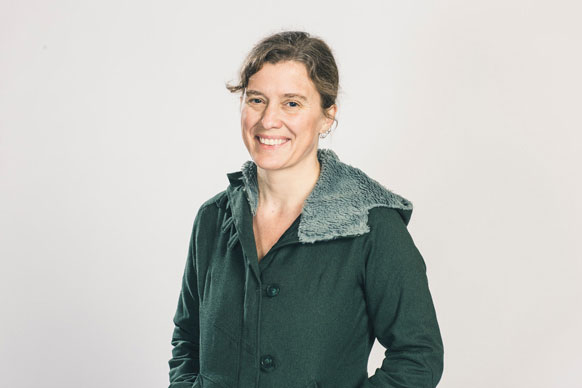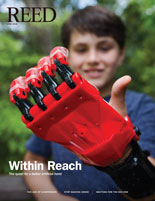
IRIS login | Reed College home Volume 95, No. 2: June 2016
Life Beyond Reed (continued)

Michelle Nijhuis ’96
Freelance Journalist
Fishers of the Yakama Nation. A new map of the Arctic. The history of wildfires. Volcanic eruptions. Dams on the Mekong River. Ada Lovelace. “Clean coal.” Dust. Snow. Fire. Bats. Michelle has one of the most fascinating jobs you could imagine—writing about science and the environment for National Geographic, the New Yorker, the Smithsonian, and a host of other publications. She lives in the heart of the spectacular Columbia Gorge and is also the coeditor of The Science Writers’ Handbook.
Thesis: “Home Range of the Cascade Torrent salamander (Rhyacotriton cascadae) and Its Implications for Conservation.”
Adviser: Prof. Bob Kaplan [bio 1983–2015]
How did you get where you are? After graduation I spent a couple of years working as a field assistant on wildlife research projects in the Southwest and California. I was looking for a way to combine science with my interest in writing. Then I happened into an internship at High Country News, a magazine that covers environmental issues in the Western U.S. It was love at first draft. HCN was my graduate school in journalism—like many (but certainly not all) journalists, I learned most of what I know on the job. I spent four years on staff there and have been a full-time freelance journalist since 2002. I continue to write and edit for HCN as a contributing editor.
What do you like about your field? I love the process of “translating” science and knotty conservation issues for a popular audience, and I love the haphazard, lifelong education that I get as a working journalist.
What lessons have you learned? I’ve had to learn a lot about how good journalism happens, and how it can continue to happen at a time of great and continuing disruption within the profession. I’ve also had to learn a lot about how independent journalists (and other creative types) can keep themselves sane and solvent in the long run.
What else should we know about you? I lived off the electrical grid for 15 years in rural Colorado before returning to the Pacific Northwest in 2013. My husband, Jack, and I have a seven-year-old daughter who is convinced that Bilbo Baggins is a girl. I manage the stress of covering climate change through frequent bouts of British television.
Is journalism a good field for Reedies? Yes, because Reedies rarely care about getting rich! Seriously, I think the breadth of the Reed curriculum does give grads a sense that they can learn something about anything—and for journalists, that’s an essential skill. We’re serial experts and professional amateurs, always poking around where we have no business being.

LATEST COMMENTS
steve-jobs-1976 I knew Steve Jobs when he was on the second floor of Quincy. (Fall...
Utnapishtim - 2 weeks ago
Prof. Mason Drukman [political science 1964–70] This is gold, pure gold. God bless, Prof. Drukman.
puredog - 1 month ago
virginia-davis-1965 Such a good friend & compatriot in the day of Satyricon...
czarchasm - 4 months ago
John Peara Baba 1990 John died of a broken heart from losing his mom and then his...
kodachrome - 7 months ago
Carol Sawyer 1962 Who wrote this obit? I'm writing something about Carol Sawyer...
MsLaurie Pepper - 8 months ago
William W. Wissman MAT 1969 ...and THREE sisters. Sabra, the oldest, Mary, the middle, and...
riclf - 10 months ago